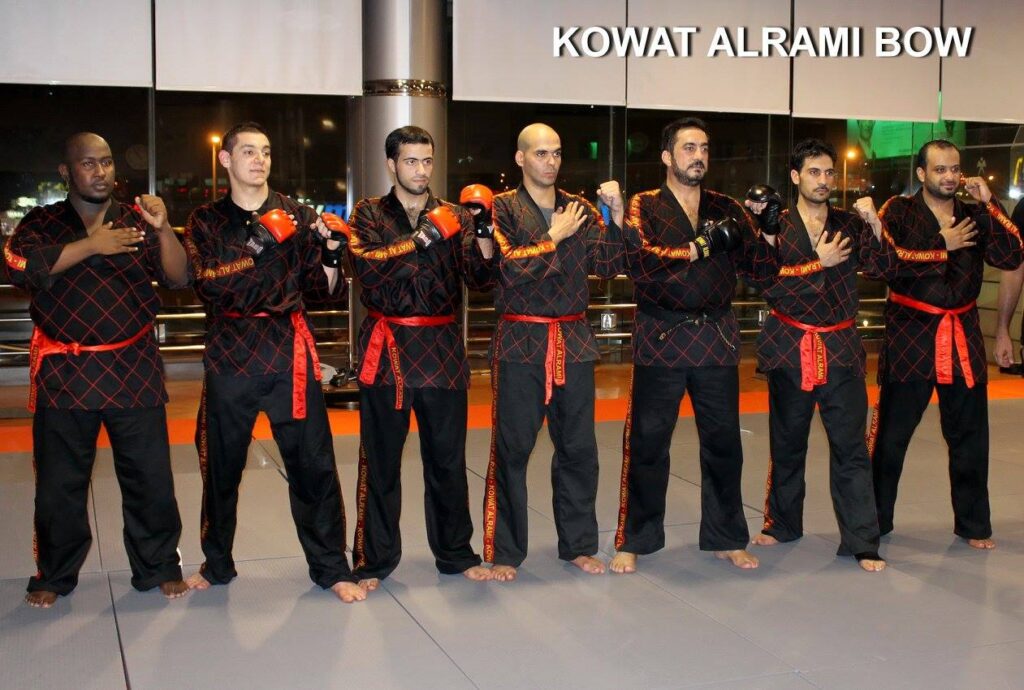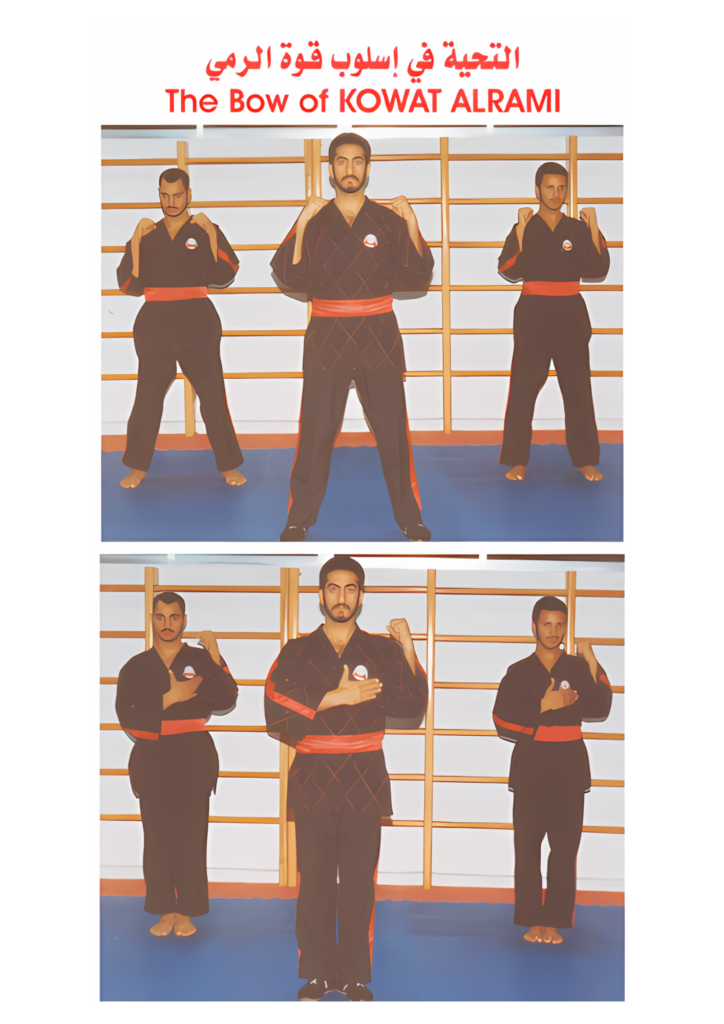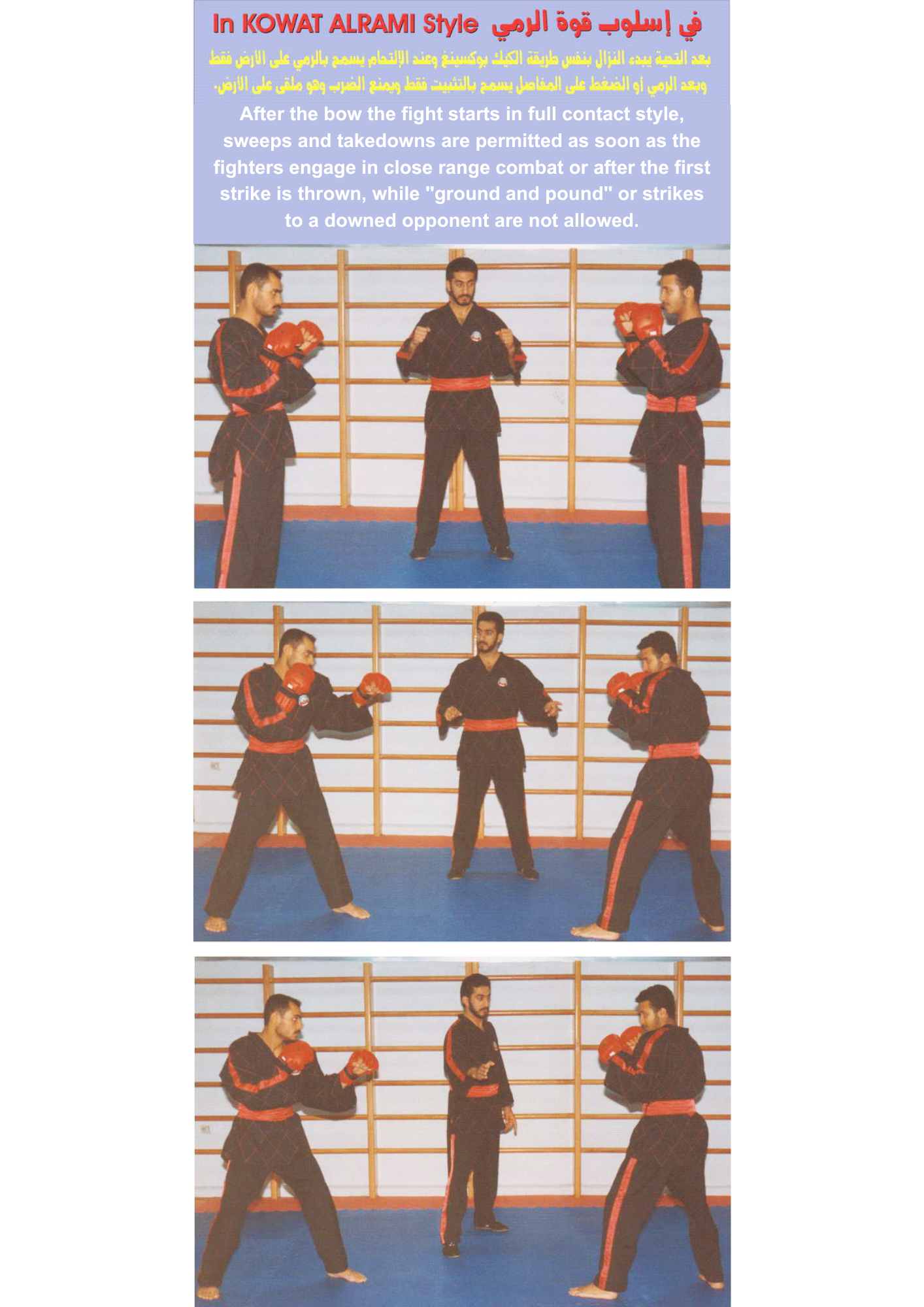KOWAT ALRAMI

Definition of KOWAT ALRAMI Style
KOWAT ALRAMI is a comprehensive martial art that incorporates kicking, punching, throwing, sweeping, wrestling, and techniques for destabilizing and controlling an opponent. With over 25 years of experience in various martial arts, we’ve observed that many modern combat sports have become fragmented, losing the holistic approach that true fighting once had. KOWAT ALRAMI restores this full-spectrum approach, integrating the dynamic moves of traditional martial arts with the precision and strategy needed for modern competition.
The Bow
First: The Greeting Form
In KOWAT ALRAMI, greeting is not just a formality; it is a vital symbol of discipline, respect, and mutual recognition. Unlike the traditional greetings in Japanese or Chinese martial arts, which often reflect Buddhist beliefs and involve prostration as a form of reverence, KOWAT ALRAMI adopts a greeting that aligns with Arab traditions and Islamic values. Prostrating or bowing to a place or person as an act of veneration is reserved solely for Allah, the Lord of the Worlds. It is inappropriate and against our beliefs to perform such acts for anyone or anything else.
To reflect this, KOWAT ALRAMI has developed a unique greeting that embodies respect, discipline, and cultural values without compromising our religious principles.

A) Greeting at the Start of Training:
- The coach and players stand in the “ready” position, with hands raised along the jaws and legs spread at shoulder width.
- The coach instructs the players with the word “greeting.” The players place their right hand over their left chest and say “Salam” (which means “peace”). Then, they return their right hand and foot to the “ready” position, ensuring not to bow their heads (a slight bow is acceptable).
- At the end of training, everyone returns to the “ready” position and repeats the greeting.
B) Greeting Between Players During Competitions and Matches:
- The referee instructs the competing players to assume the “ready” position.
- The referee then says “greeting,” and the players perform the action described in the training greeting.
- When greeting a coach or someone of higher rank, the player performs the greeting without needing the coach to say “greeting.”
Note: The hand-to-chest movement signifies that the greeting comes from the heart, representing love, brotherhood, and tolerance. The word “peace” emphasizes that our training is for self-defense, and the ultimate goal is to achieve peace, embodying the noble values of the word.

Rules of KOWAT ALRAMI
KOWAT ALRAMI offers a versatile combat system that accommodates different levels of contact—light, medium, and full—ensuring that athletes of all preferences can find their place within the art. Whether a fighter prefers the intensity of full-contact combat or the strategic finesse of light contact, KOWAT ALRAMI provides a comprehensive set of rules designed to protect participants while maintaining the excitement and challenge of the sport.
Regional Adaptation
As KOWAT ALRAMI continues to evolve, regional adaptations may be made to reflect local customs and preferences. However, the core principles of the style—honor, discipline, and a holistic approach to combat—will always remain intact. The rules are designed to grow with the sport, incorporating feedback from practitioners worldwide to ensure that KOWAT ALRAMI stays relevant and competitive on the global stage.
KA FIGHTING STYLES TUTORIAL
KA RULES TUTORIAL
Conclusion
KOWAT ALRAMI is more than a fighting style; it’s a complete martial system that honors the past while forging a new path for the future. By combining the best elements of traditional and modern martial arts, we have created a unique and powerful discipline that stands as a testament to the strength, skill, and resilience of the Arab people. Whether you are a seasoned fighter or a newcomer to martial arts, KOWAT ALRAMI offers the tools and training to excel in combat and life.




